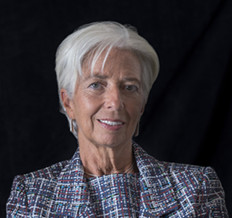Christine Lagarde, IMF: an even-handed approach to crypto-assets
The dizzying gyrations of crypto-assets such as Bitcoin invite comparisons with the tulip mania that swept Holland in the 17th century and the recent dot-com bubble. With more than 1,600 crypto-assets in circulation, it seems inevitable that many will not survive the process of creative destruction.
I have previously looked at the dark side of crypto-assets, including their potential use for money laundering and the financing of terrorism. Here, I want to examine the promise they offer. A judicious look at crypto-assets should lead us to neither crypto-condemnation nor crypto-euphoria.
Just as a few technologies that emerged from the dot-com era have transformed our lives, the crypto-assets that survive could have a significant impact on how we save, invest and pay our bills. That is why policymakers should keep an open mind and work toward an even-handed regulatory framework that minimizes risks while allowing the creative process to bear fruit. This was one of the points I made in a speech at the Bank of England last year.
What are some of the potential benefits? Answers are already starting to take shape.
Fast, inexpensive
- Crypto-assets enable fast and inexpensive financial transactions, while offering some of the convenience of cash. Some payment services now make overseas transfers in a matter of hours, not days. If privately issued crypto-assets remain risky and unstable, there may be demand for central banks to provide digital forms of money.
- The underlying technology of crypto-assets – distributed ledger technology (DLT) – could help financial markets function more efficiently. Self-executing and self-enforcing “smart contracts” could eliminate the need for some intermediaries. Already, the Australian Securities Exchange has said it plans to use DLT to manage the clearing and settlement of equity transactions.
- Secure storage of important records is another promising use for DLT. Healthcare companies are studying how to use the technology to maintain confidential medical data while providing access to insurers and other authorised users.
- In developing economies, such advances can help secure property rights, increase market confidence and promote investment. In Ghana, where property ownership is often the subject of disputes, a DLT-based platform called Bitland promises to help solve the problem by securely recording land sales.
A better balance
In my view, the fintech revolution will not eliminate the need for trusted intermediaries, such as brokers and bankers. There is hope, however, that decentralised applications spurred by crypto-assets will lead to a diversification of the financial landscape, a better balance between centralized and decentralised service providers, and a financial ecosystem that is more efficient and potentially more robust in resisting threats.
What are the implications for financial stability? Our preliminary assessment is that, given their still-small footprint and limited links to the rest of the financial system, crypto-assets do not pose an immediate danger. Even so, regulators should remain vigilant: crypto-assets have the potential to magnify the risks of highly leveraged trading, and to increase the transmission of economic shocks should they become more integrated into mainstream financial products.
Moreover, banks and other financial institutions will face challenges to their business models, should there be a large-scale shift away from government-issued currencies toward crypto-assets. Regulators might find it harder to ensure the stability of a more diffuse and decentralized financial system. Central banks might have more trouble acting as the lender of last resort in case of a crisis.
Even-handed approach
Before crypto-assets can transform financial activity in a meaningful and lasting way, they must earn the confidence and support of consumers and authorities. An important initial step will be to reach a consensus within the global regulatory community on the role crypto-assets should play. Because crypto-assets know no boundaries, international cooperation will be essential.
Here, the IMF, with a membership of 189 countries, can play a key role by offering advice and serving as a forum for discussion and collaboration in the development of a consistent regulatory approach.
For this to happen, we must keep abreast of rapid developments in markets and technologies. We must act quickly to close the knowledge gaps that inhibit the effective monitoring of crypto-assets. There should be systemic risk assessment and timely policy responses, as well as measures to protect consumers, investors, and market integrity.
Understanding the risks that crypto-assets may pose to financial stability is vital if we are to distinguish between real threats and needless fears. That is why we need an even-handed regulatory agenda, one that protects against risks without discouraging innovation.
A clear-eyed approach can help us harness the gains and avoid the pitfalls of the new crypto-assets landscape.
By Christine Lagarde, managing director of IMF
The article was first published on the IMF Blog












































